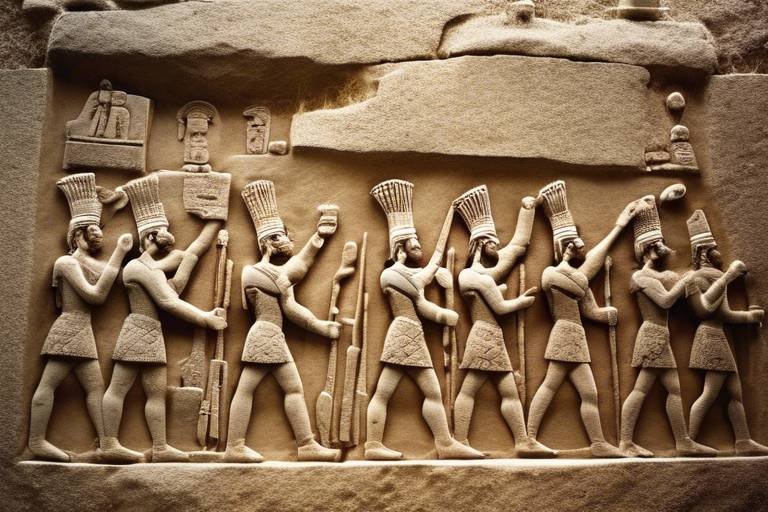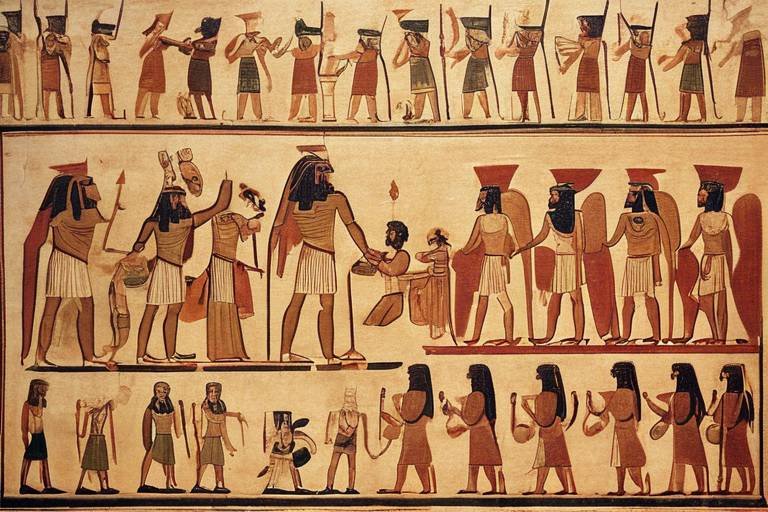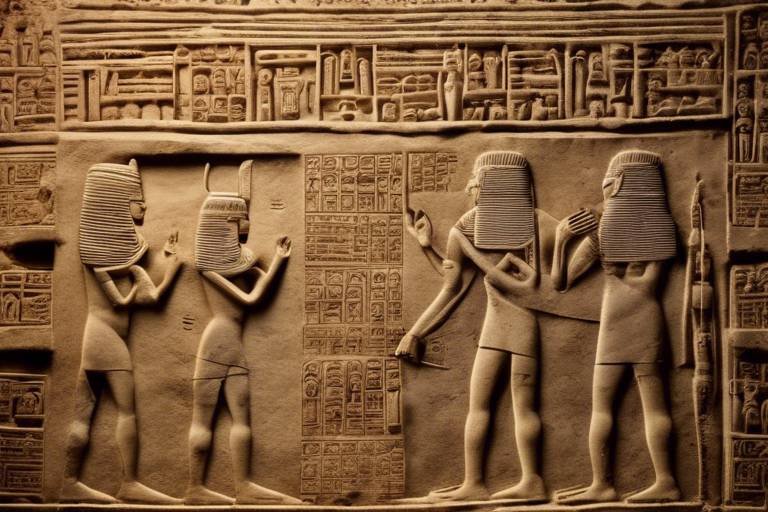The Enigma of the Lost City of Palenque
The Lost City of Palenque stands as a mesmerizing enigma, shrouded in mystery and intrigue, waiting to unveil its secrets to those who dare to explore its ancient wonders. Nestled deep within the lush jungles of Mexico, Palenque whispers tales of a bygone era, enticing adventurers and historians alike to unravel its enigmatic past.

History and Discovery
The history of the Lost City of Palenque is a captivating tale that spans centuries, shrouded in mystery and intrigue. Nestled deep in the lush jungles of present-day Mexico, Palenque was once a thriving metropolis of the ancient Maya civilization, its grandeur rivaling that of other renowned Maya cities such as Tikal and Chichen Itza.
The discovery of Palenque by Spanish explorers in the 18th century marked a pivotal moment in the history of Mesoamerican archaeology. Led by the intrepid explorer Antonio del Río, the expedition stumbled upon the overgrown ruins of Palenque, hidden beneath a canopy of dense foliage. The sight of the majestic temples and palaces peeking through the jungle canopy sparked a wave of excitement and wonder among the explorers, igniting a renewed interest in the ancient Maya civilization.
As the explorers delved deeper into the heart of Palenque, they uncovered a treasure trove of architectural marvels and artistic masterpieces that spoke volumes about the sophistication and ingenuity of the Maya people. The intricate carvings, elaborate stucco decorations, and towering pyramids bore witness to a civilization that excelled in art, science, and spirituality.
Despite the passage of time and the encroaching jungle, the legacy of Palenque endures as a testament to the resilience and creativity of the ancient Maya. The enigmatic glyphs and hieroglyphic inscriptions adorning the walls of the temples offer a glimpse into the rich tapestry of Maya culture, revealing stories of gods, kings, and celestial events that once held sway over the city.
Palenque's royal tombs, with their opulent treasures and sacred offerings, provide a window into the beliefs and rituals of the Maya elite. The elaborate funerary practices, including jade masks, precious ornaments, and symbolic artifacts, underscored the Maya's profound reverence for the afterlife and their fervent belief in the continuity of existence beyond death.
As we unravel the mysteries of Palenque's past, we are drawn into a world of wonder and fascination, where each stone bears witness to the grandeur and complexity of a civilization lost in time. The enigma of the Lost City of Palenque beckons us to explore its secrets, inviting us to embark on a journey of discovery and enlightenment.
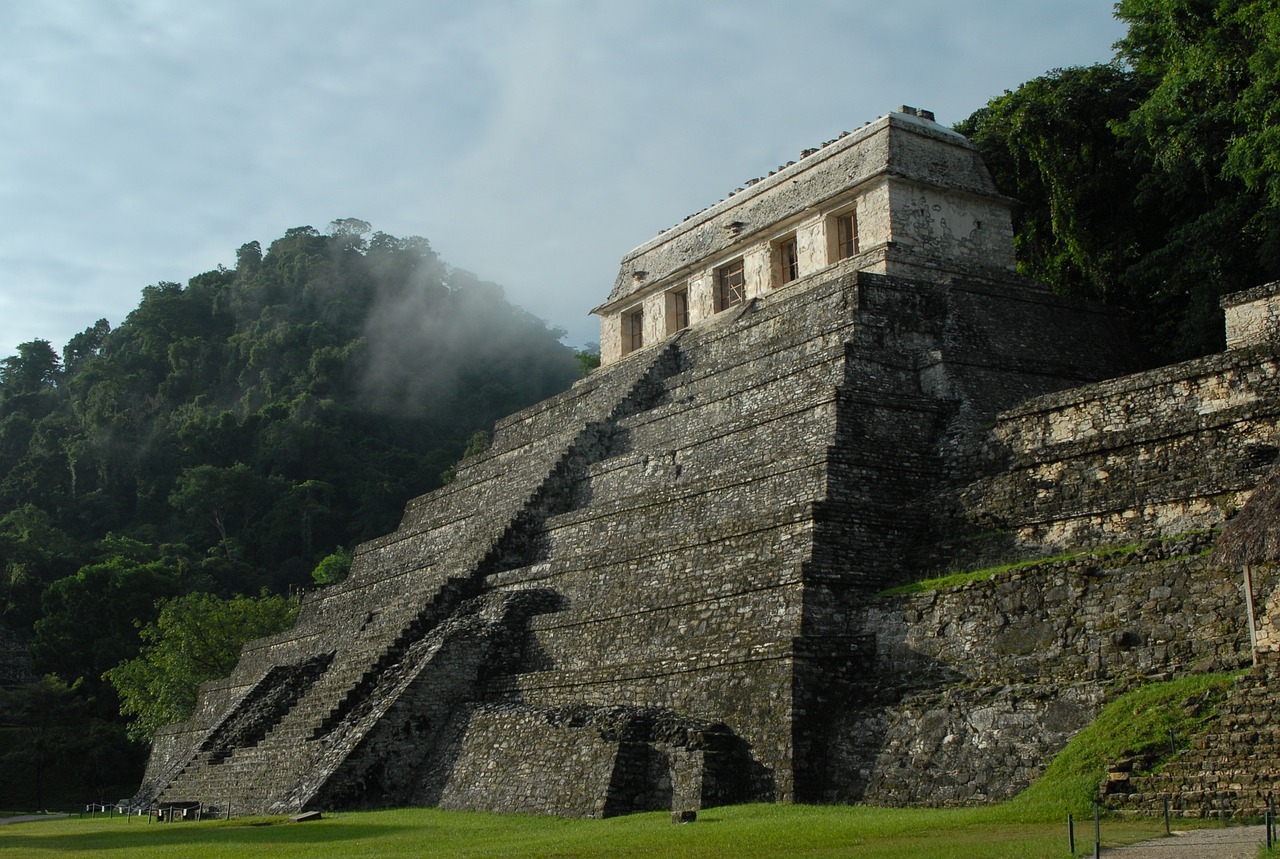
Architectural Marvels
When it comes to the architectural marvels of the Lost City of Palenque, one cannot help but be astounded by the intricate structures that stand as a testament to the advanced engineering skills of the ancient Maya civilization. The city is adorned with majestic temples, palaces, and pyramids, each meticulously crafted with precision and adorned with intricate carvings and sculptures that tell stories of the past.
One of the most iconic structures in Palenque is the Temple of the Inscriptions, a grand pyramid that houses the tomb of the renowned ruler Pakal the Great. The temple is not only a stunning architectural feat but also a significant historical site that offers insights into the religious beliefs and practices of the Maya people.
Exploring the city, visitors are greeted with the Palace, a complex of interconnected buildings featuring intricate stone mosaics, courtyards, and corridors. The architectural layout of the Palace showcases the sophisticated urban planning of Palenque, with its strategic positioning and functional design reflecting the societal organization and cultural values of its inhabitants.
Moreover, the unique architectural features of Palenque, such as the use of corbel arches and vaulted ceilings, demonstrate the innovative construction techniques employed by the Maya civilization. These architectural elements not only served practical purposes in providing structural support but also added a sense of grandeur and artistic expression to the buildings.
As visitors wander through the ancient ruins of Palenque, they are transported back in time to a world where architectural innovation and artistic creativity flourished. The architectural marvels of Palenque continue to captivate and inspire awe, inviting us to marvel at the ingenuity and craftsmanship of a civilization long gone but not forgotten.
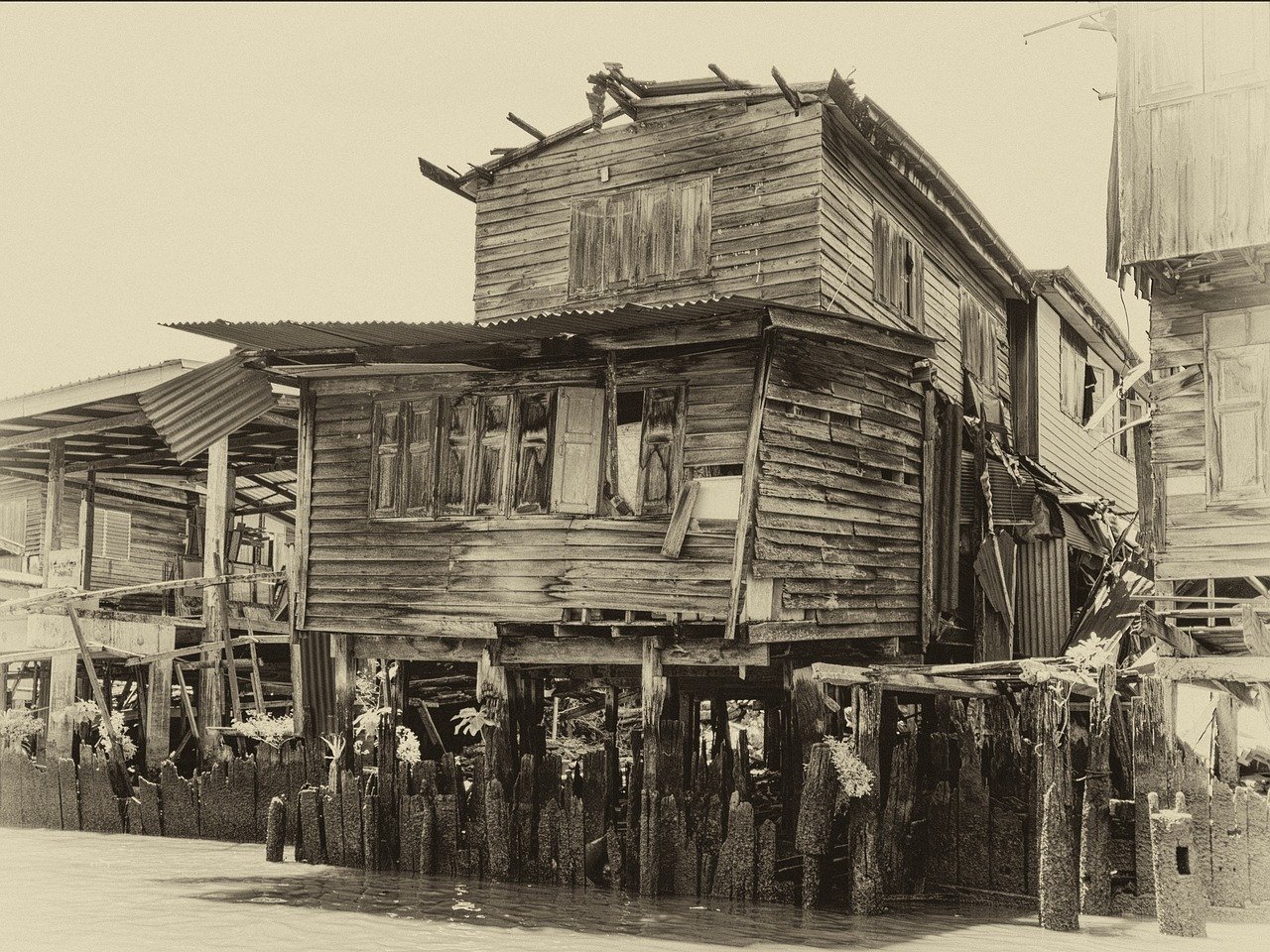
Art and Hieroglyphics
Art and hieroglyphics play a pivotal role in unraveling the mysteries of the ancient city of Palenque. The intricate artwork found within the structures of Palenque provides a window into the artistic prowess and cultural expressions of the Maya civilization. The vivid murals, sculptures, and carvings depict scenes of mythology, rituals, and daily life, offering a glimpse into the beliefs and practices of the city's inhabitants.
Moreover, the hieroglyphic inscriptions found throughout Palenque are a treasure trove of information, serving as a written record of the city's history, genealogy, and political events. These glyphs, meticulously carved into stone tablets and monuments, have been instrumental in deciphering the timeline of Palenque's rulers and their achievements. The intricate nature of Maya hieroglyphs showcases the intellectual sophistication of the ancient civilization, highlighting their advanced writing system and knowledge of astronomy.
One of the most renowned structures in Palenque adorned with intricate artwork and hieroglyphics is the Temple of the Inscriptions. This pyramid temple houses the tomb of the famous ruler Pakal the Great, whose sarcophagus is adorned with detailed carvings and inscriptions. The hieroglyphic texts found within the temple provide valuable insights into Pakal's reign and his divine status among the Maya people.
The art and hieroglyphics of Palenque not only serve as a visual feast for archaeologists and historians but also offer a profound connection to the spiritual and intellectual world of the ancient Maya civilization. Each stroke of the brush and chisel carries a story, a message from the past waiting to be deciphered and appreciated for its enduring beauty and cultural significance.

Royal Tombs and Burials
Exploring the depths of Palenque's history unveils a realm of regal grandeur and mystique, particularly when delving into the realm of . The ancient rulers of Palenque were honored in death with elaborate tombs that reflected their esteemed status and beliefs in the afterlife. These tombs, adorned with intricate carvings and precious offerings, provide a glimpse into the spiritual and ceremonial practices of the Maya civilization.
One of the most renowned discoveries within Palenque is the tomb of King Pakal the Great, a revered ruler whose burial chamber was unearthed in the Temple of the Inscriptions. The intricately carved sarcophagus depicting Pakal's journey to the underworld captivates visitors with its detailed craftsmanship and symbolic imagery, offering a window into the ruler's perceived journey into the afterlife.
The hieroglyphic inscriptions found within the royal tombs of Palenque not only narrate the genealogy and achievements of the rulers but also convey their divine lineage and connections to the celestial realms. These inscriptions serve as a testament to the spiritual beliefs and cosmological worldview of the ancient Maya, emphasizing the interconnectedness between the earthly realm and the divine.
Moreover, the burial practices of Palenque's elite shed light on the societal structure and religious customs of the ancient city. The placement of offerings, including jade ornaments, pottery, and ceremonial objects, in the tombs reflects the importance of ritual and reverence for the deceased rulers. These elaborate burial traditions underscore the significance of the rulers' roles as intermediaries between the mortal realm and the supernatural forces that governed their world.
As archaeologists continue to uncover and study the royal tombs of Palenque, each discovery adds a new layer of understanding to the complex tapestry of Maya civilization. The legacy of these rulers, preserved within the hallowed chambers of the city, serves as a testament to their enduring influence and power, transcending time and inviting us to unravel the mysteries of their regal past.
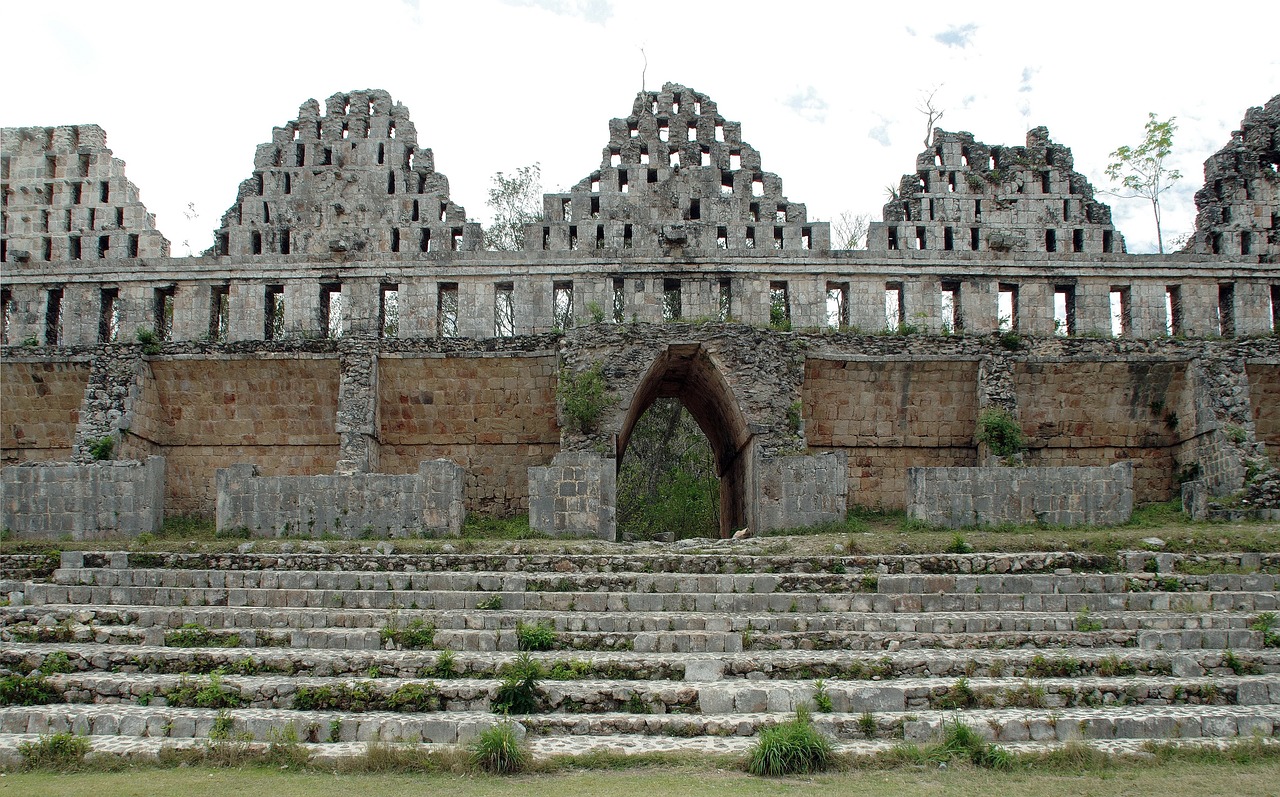
Cultural Significance
Palenque holds a profound within the realm of Maya civilization, serving as a testament to the artistic, architectural, and spiritual achievements of its ancient inhabitants. The city's intricate structures and detailed artwork reflect a sophisticated society deeply rooted in religious beliefs and ceremonial practices. Through the study of Palenque, archaeologists have gained valuable insights into the complex social hierarchy, religious rituals, and political structures of the Maya people.
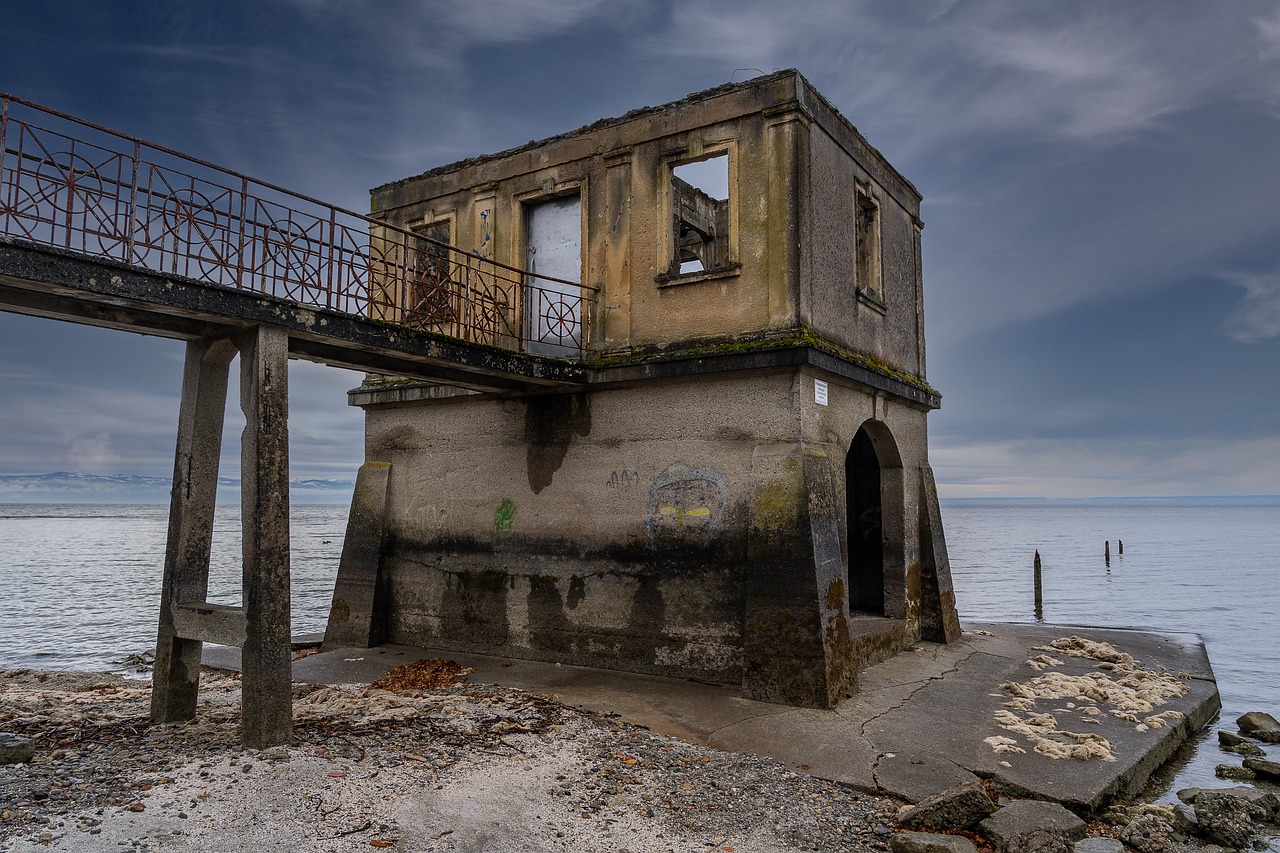
Astronomical Alignments
When gazing upon the ancient structures of Palenque, one cannot help but wonder about the celestial connections embedded within its layout. The Maya civilization, known for their advanced knowledge of astronomy, may have incorporated astronomical alignments into the design and orientation of Palenque's buildings. Could the positioning of temples and pyramids have been intentionally aligned with celestial bodies, such as the sun, moon, or stars? Perhaps these alignments served not only practical purposes but also held symbolic or spiritual significance for the inhabitants of Palenque.

Abandonment and Decline
As the sun set on the once-thriving city of Palenque, a shadow of decline loomed over its magnificent structures. The abandonment of this ancient metropolis was not a sudden event but rather a gradual process that unfolded over centuries, shrouded in mystery and speculation.
Environmental challenges played a significant role in the decline of Palenque. The dense jungle that once surrounded the city began to encroach upon its grand temples and palaces, reclaiming the land that had been meticulously carved out by the Maya civilization. The relentless forces of nature, coupled with the erosion of time, gradually wore down the once-glorious city.
Political upheaval also contributed to the abandonment of Palenque. As power struggles and conflicts plagued the region, the rulers of Palenque found themselves increasingly isolated and vulnerable. The decline of central authority led to a weakening of the city's infrastructure and defenses, making it more susceptible to outside threats and internal strife.
Despite the gradual decline, the legacy of Palenque endured through the centuries, its enigmatic ruins serving as a silent testament to a bygone era. The once-thriving city faded into obscurity, its secrets buried beneath layers of history and overgrowth.

Modern-Day Exploration
Modern-day exploration of Palenque continues to unveil new insights into the ancient city's mysteries. Archaeologists and researchers are tirelessly working to uncover hidden chambers, decipher inscriptions, and piece together the puzzle of Palenque's past. Excavations have revealed intricate details of daily life, religious practices, and societal structure within the city's ancient walls.
One of the most fascinating aspects of modern exploration at Palenque is the use of advanced technology to study the site. Ground-penetrating radar, LiDAR imaging, and 3D modeling techniques are revolutionizing our understanding of the city's layout and architectural complexity. These tools allow researchers to peer beneath the surface and reconstruct the past with unprecedented accuracy.
Conservation efforts play a crucial role in preserving Palenque for future generations. The delicate balance between protecting the site's fragile structures and allowing access for study and tourism is a constant challenge. Through meticulous restoration work and ongoing monitoring, experts strive to maintain the integrity and authenticity of Palenque's ancient wonders.
Palenque's designation as a UNESCO World Heritage Site underscores its global significance and the need for responsible stewardship. Educational programs, visitor centers, and guided tours offer a gateway for the public to engage with the rich history and cultural heritage of this enigmatic city. By promoting awareness and appreciation, modern-day exploration ensures that Palenque's legacy endures for years to come.

Legacy and Mystique
As we gaze upon the ancient ruins of Palenque, we are not merely witnessing a testament to a bygone era but unraveling the enigmatic legacy and mystique that shrouds this majestic city. The allure of Palenque lies not only in its architectural splendors but in the whispers of untold stories and the echoes of a civilization lost to time.
Steeped in mystery and grandeur, the legacy of Palenque transcends mere stone and mortar, beckoning us to delve deeper into its secrets. Like a cryptic puzzle waiting to be solved, each crumbling edifice and intricately carved hieroglyph holds the key to unlocking the enigma of this ancient metropolis.
Imagine the rulers of Palenque, their regal tombs adorned with treasures and artifacts, a testament to their belief in the afterlife and their divine lineage. The royal burials whisper tales of power and prestige, offering a glimpse into the intricate web of rituals and ceremonies that defined the lives of the elite.
But beyond the physical remnants of a once-thriving city, Palenque's mystique lies in its cultural significance and historical resonance. As a cornerstone of Maya civilization, Palenque's influence reverberates through the annals of time, shaping the beliefs and practices of subsequent Mesoamerican cultures.
Moreover, the astronomical alignments meticulously embedded within Palenque's structures hint at a profound connection to the celestial realms, inviting speculation and wonder about the ancient Maya's astronomical knowledge and spiritual beliefs.
Despite the passage of centuries and the ravages of time, Palenque endures as a symbol of resilience and enduring legacy. Its enigmatic charm continues to captivate explorers and scholars alike, drawing them into a world where the past and present converge in a timeless dance of discovery and contemplation.
Frequently Asked Questions
- What is the significance of the Lost City of Palenque?
The Lost City of Palenque holds immense cultural and historical significance as one of the most important Maya archaeological sites. Its well-preserved structures, intricate artwork, and hieroglyphic inscriptions provide valuable insights into the ancient Maya civilization's art, architecture, and religious practices.
- How was Palenque rediscovered?
Palenque was rediscovered by Spanish explorers in the 18th century. The city had been abandoned for centuries, hidden beneath the dense jungle foliage. Its rediscovery sparked renewed interest in Maya civilization and led to extensive archaeological exploration of the site.
- What can visitors expect to see at Palenque?
Visitors to Palenque can expect to see impressive architectural marvels, including the iconic Temple of the Inscriptions and the Palace complex. They can also explore royal tombs, intricate artwork, and hieroglyphic inscriptions that offer a glimpse into the rich history and culture of the ancient Maya civilization.
- Are there any ongoing archaeological research efforts at Palenque?
Yes, there are ongoing archaeological research and conservation efforts at Palenque to uncover more secrets of the ancient city and preserve its cultural heritage. Archaeologists continue to make new discoveries that enhance our understanding of Palenque's history and significance.




